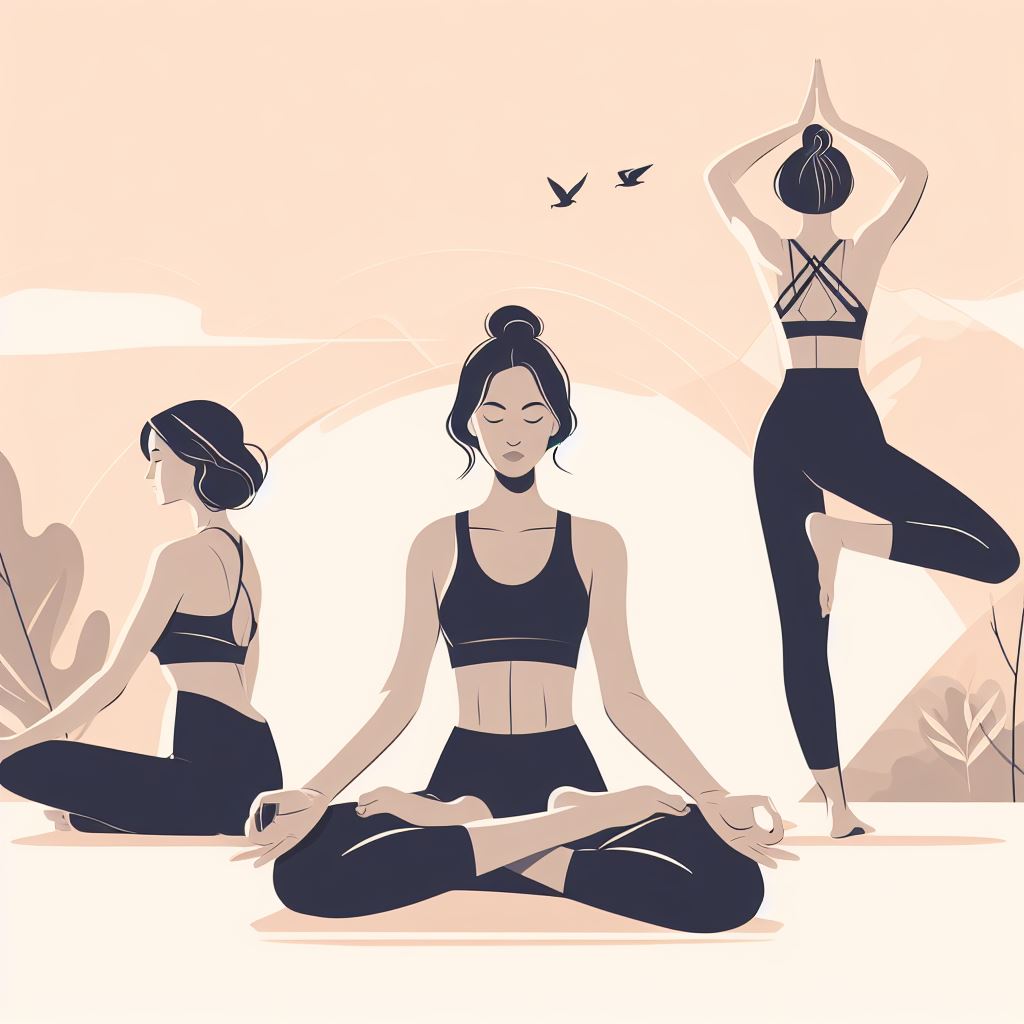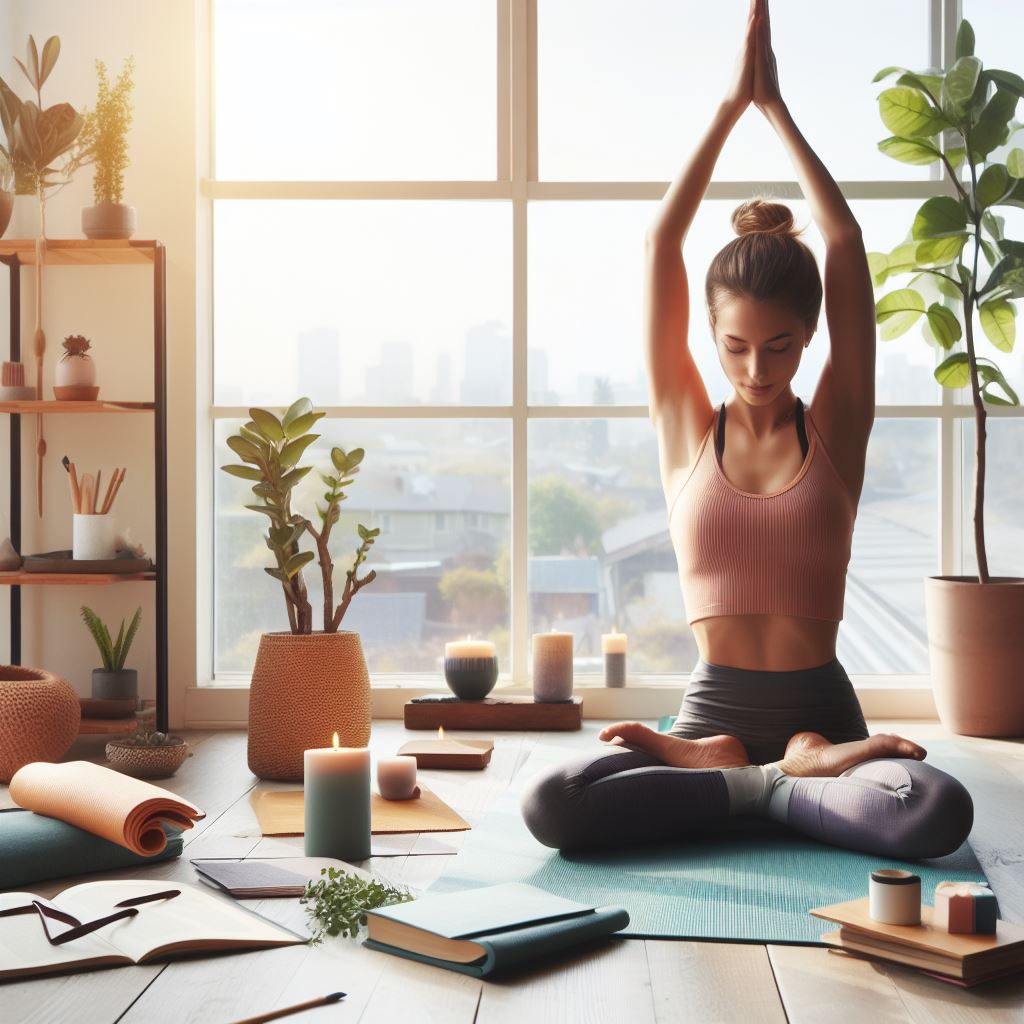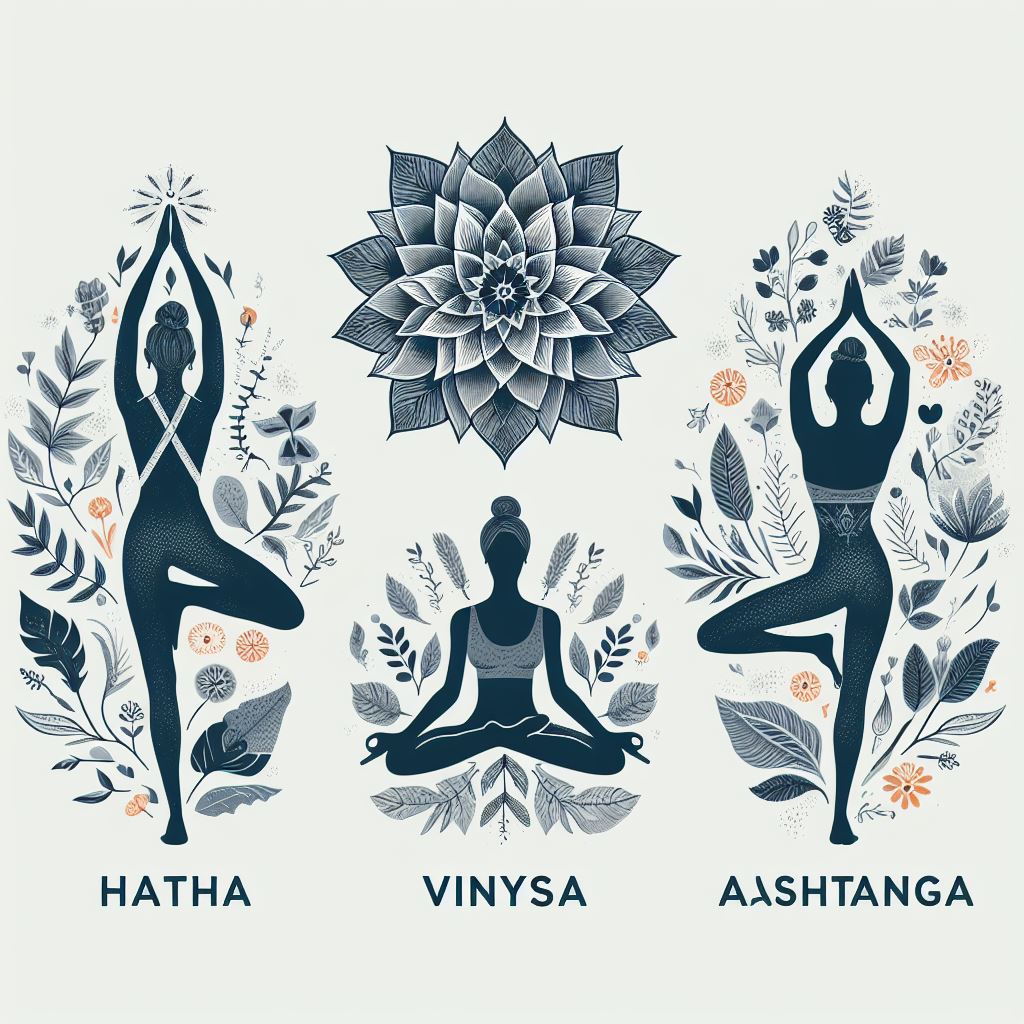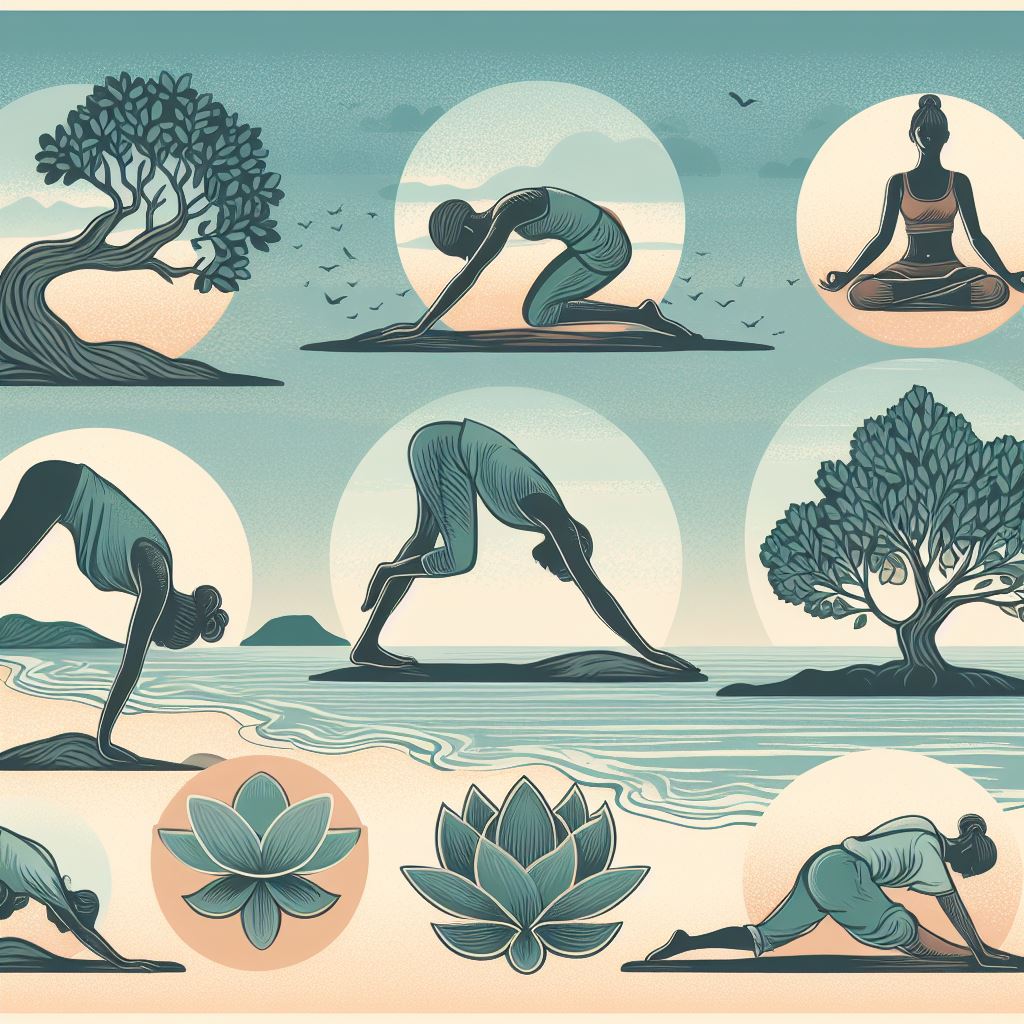
Introduction
Yoga, an ancient practice rich in history and depth, offers more than just physical benefits; it’s a pathway to building inner strength and confidence. Through the harmony of body and mind, yoga empowers us to discover our true potential, both on and off the mat.
Understanding Yoga’s Holistic Approach
The essence of yoga transcends far beyond the mere bending and stretching of the body. It’s a deeply holistic practice, a harmonious symphony of physical postures, mental focus, and emotional balance. This powerful trifecta forms the cornerstone of yoga, a foundation not just for physical fitness, but for cultivating inner resilience and self-assurance.
In yoga, each pose or ‘asana’ is more than a physical gesture; it’s a conduit for exploring the depths of our being. When we move our bodies into these ancient postures, we’re not just strengthening muscles and increasing flexibility; we’re also unlocking a deeper connection to ourselves. This physical engagement is the first step in a journey that leads us towards greater self-awareness and mindfulness.
Mental focus, or ‘dharana‘, plays a pivotal role in this practice. As we flow from one pose to another, the mind is encouraged to anchor in the present moment. This focus clears the clutter of daily thoughts, worries, and distractions, creating a space of clarity and calmness. It’s in these moments of profound focus that we find ourselves immersed in a state of flow, where time stands still, and the mind is entirely aligned with the body. This mental discipline nurtures a sense of peace and equanimity that extends beyond the yoga mat, influencing all areas of our lives.
Equally vital is the emotional balance that yoga cultivates. The practice is an emotional journey that invites us to confront and embrace our feelings. As we hold a challenging pose, we learn to face discomfort and uncertainty. The elation of achieving a new posture teaches us about joy and satisfaction. Yoga becomes a safe space where we can experience and process our emotions in a healthy, controlled environment.
This holistic approach of yoga is a powerful tool for building resilience. The physical practice makes our bodies strong and supple, ready to face the physical challenges of life. The mental discipline equips us with focus and clarity, empowering us to navigate through life’s complexities with a calm and steady mind. The emotional balance allows us to approach life’s ups and downs with grace and equanimity.
Moreover, yoga instills a deep sense of self-assurance. Through regular practice, we start witnessing our capabilities, pushing boundaries, and achieving things we once thought impossible. This realization transcends physical abilities, permeating into every aspect of our lives, fostering a strong sense of self-belief and confidence.
In conclusion, the holistic approach of yoga is a beautiful and intricate tapestry of physical strength, mental clarity, and emotional stability. It’s a journey that invites us to delve deep into ourselves, discovering and embracing the immense potential that lies within. As we step onto the mat, we embark on a path that not only transforms our bodies but also elevates our minds and soothes our souls.
Pose 1: Warrior II (Virabhadrasana II)
The Warrior II pose is a symbol of strength and stability. It empowers you to stand firm and strong, embodying the spirit of a warrior.
- Description and Benefits: This pose strengthens the legs and arms, improves balance and concentration, and instills a sense of power.
- Step-by-Step Guide: Stand with feet wide apart, turn one foot out, and bend the knee. Extend your arms and gaze over the front hand. Feel the strength coursing through your body.
Pose 2: Tree Pose (Vrikshasana)
Tree Pose teaches balance and focus, vital components of confidence.
- Description and Benefits: This pose improves balance, focuses the mind, and strengthens the legs.
- Step-by-Step Guide: Stand on one leg, place the other foot on your inner thigh, and bring your hands together in a prayer position. Root down like a tree and reach upward with your spirit.
Pose 3: Boat Pose (Navasana)
Boat Pose is a journey of discovering inner willpower and physical strength.
- Description and Benefits: It strengthens the core, improves digestion, and boosts overall morale.
- Step-by-Step Guide: Sit down, lift your feet, balance on your sitting bones, and extend your arms. Feel the burn in your core – a fire igniting your inner strength.
Integrating Poses into Daily Practice
The integration of yoga poses into your daily routine is a transformative journey, one that extends beyond the physical dimensions of practice into the realms of personal growth and life enhancement. It’s a commitment, not just to the practice of yoga, but to yourself – to nurture, to grow, and to harmonize.
Consistency in practicing yoga is the golden thread that weaves together the benefits of this ancient art. Just as a river shapes the land through its persistent flow, regular yoga practice shapes your being, both inside and out. It’s not about the length of each session; rather, it’s about the regularity. Even a few minutes each day can create profound changes over time. This steady rhythm of practice instills a discipline that transcends the mat, influencing other areas of your life, and bringing about a sense of order and purpose.
But yoga is not just a physical act; it’s a mindful journey. Mindful breathing, or ‘pranayama’, is a crucial aspect of this journey. As you flow through each pose, let your breath guide and anchor you. This conscious breathing acts as a bridge, connecting the body and mind. With each inhale, imagine drawing in energy and positivity; with each exhale, envision releasing stress and negativity. This harmonious dance of breath and movement brings about a deeper level of awareness and presence. You become acutely attuned to the here and now, fully immersed in each movement, each moment.
Presence in each moment is the essence of yoga. As you integrate these poses into your daily routine, immerse yourself fully. Notice the subtleties of your body’s responses, the texture of your breath, and the fleeting thoughts that cross your mind. This presence is a form of meditation in action, a practice of being fully engaged in the now, which in turn cultivates a heightened sense of awareness in your daily life.
Incorporating yoga into your daily life is a journey of discovery. Each day, each pose presents a new opportunity to explore and understand yourself better. It’s a process of uncovering layers, of delving deeper into your own depths. The transformation is gradual yet profound. Over time, you’ll notice a newfound strength and flexibility not just in your body, but in your mind and spirit as well.
Embrace this journey with openness and patience. Allow the poses to be your teachers, guiding you toward a life of balance, harmony, and mindfulness. The practice of yoga is a gift to yourself, a commitment to nurturing your well-being, and a celebration of your presence in the world.
Overcoming Challenges in Practice
The path of yoga, much like any meaningful journey in life, is strewn with its share of challenges and obstacles. However, it’s essential to remember that these challenges are not roadblocks; rather, they are stepping stones, each presenting a unique opportunity for growth and self-discovery. The beauty of overcoming these hurdles lies in the resilience and strength that you cultivate along the way.
Embracing challenges in your yoga practice requires a shift in perspective. View each difficult pose, each moment of imbalance, or each day when your mind refuses to quieten, not as failures, but as lessons. These are moments that teach you about your own strengths and limitations, about patience and perseverance. They are invaluable experiences that add depth and meaning to your practice, making your journey more rich and fulfilling.
The pursuit of perfection, especially in a practice as personal and introspective as yoga, can be a hindrance rather than a help. Yoga is not about achieving the perfect pose or having the most flexible body. It’s about the journey towards aligning your body, mind, and spirit. It’s about progress, however small it may seem. Each time you come to the mat, you are a step closer to understanding yourself better, to harmonizing your inner and outer self. This progress, this continual journey towards self-improvement, is far more valuable than the elusive notion of perfection.
One of the most profound lessons in yoga is learning to listen to and honor your body. Some days, your body may feel strong and capable, effortlessly moving into poses. On other days, it might feel rigid or tired. These fluctuations are normal and to be embraced. They teach you to be adaptive, to modify your practice as needed, and to respect your body’s needs. This adaptability and self-respect are skills that will serve you well beyond your yoga mat, in the broader canvas of life.
Moreover, overcoming challenges in yoga often requires an exploration of the inner self. It’s about facing your fears, confronting your anxieties, and pushing beyond the comfortable. This exploration is not always easy, but it is incredibly rewarding. With each hurdle crossed, you gain a deeper understanding of your capabilities, a stronger belief in your resilience, and a greater appreciation for the journey.
In conclusion, the challenges you face in your yoga practice are an integral part of your growth. They are what make your journey unique and valuable. So, embrace each challenge with an open heart and a willing spirit. Celebrate your progress, cherish your experiences, and continue moving forward with patience and perseverance. Remember, the beauty of yoga lies not in the destination but in the journey itself.
Conclusion
Warrior II, Tree, and Boat Poses are more than just physical exercises; they are tools for building strength and confidence. Through regular practice, you will not only strengthen your body but also fortify your mind and spirit.
FAQs
- How often should I practice these poses? Regular practice, even if brief, is beneficial. Aim for daily or several times a week.
- Can beginners attempt these poses? Absolutely! Start with modifications and progress gradually.
- How long should I hold each pose? Begin with 30 seconds to a minute and increase as you gain strength and confidence.
- What should I do if I find a pose too challenging? Listen to your body, make modifications, and practice patience. Yoga is a journey, not a race.
- Can yoga poses really help with confidence? Yes, by building physical strength and mental resilience, yoga fosters a profound sense of self-confidence.



